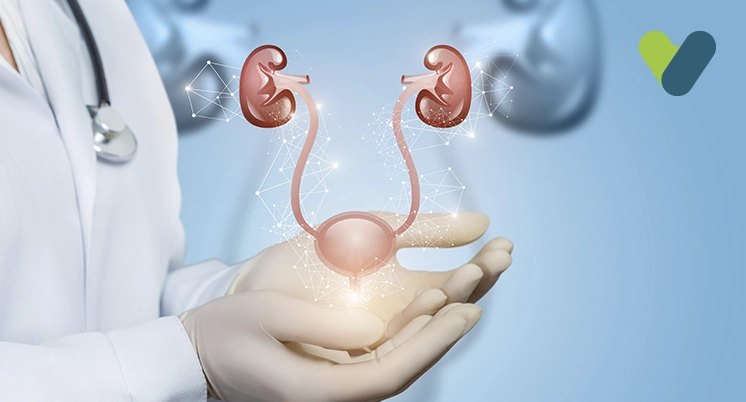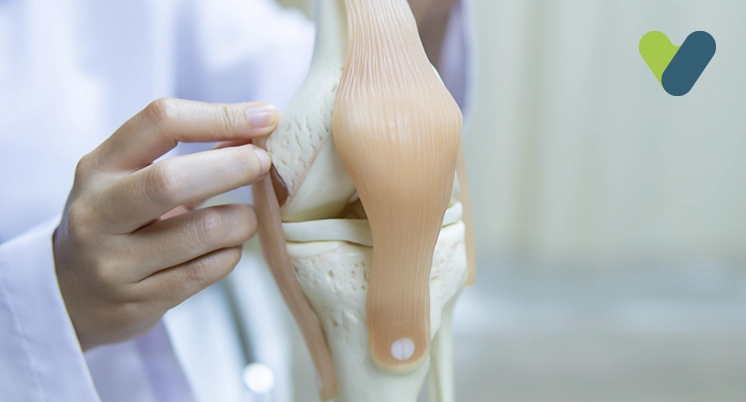Introduction
A hydrocele is a form of inflammation inside the scrotum, the skin sac that carries the testicles. As liquid gathers in the tiny pouch that covers a testicle, it causes inflammation. Hydroceles are extremely common in male children, especially infants. They usually disappear as the child grows older. They can affect about 1% of adult men, usually beyond the age of 40. A hydrocele can develop in adults and older children because of scrotal damage or any other health concerns. A hydrocele will almost always resolve on its own but if it expands in size, it can cause scrotal enlargement, pain, and irritation and may necessitate surgical treatment. A hydrocele surgery, also known as a hydrocelectomy, eliminates the fluid and reduces the diameter of this sac.
The hydrocele surgery cost varies according to the severity of the procedure and the type of procedure performed. The hydrocele surgery cost in India varies between INR 20,000 and INR 80,000.
Why is hydrocele surgery done?
Men and children may require a hydrocelectomy when they have a swollen scrotum that does not go away by itself. Everyone with a hydrocele, irrespective of their age, may benefit from a hydrocelectomy (hydrocele surgery).
When the enlargement from a hydrocele becomes uncomfortable, unpleasant, or affects the functionality of other genital organs in teenagers or adults, surgery may be required.
Your surgeon might advise you to have a hydrocele surgery if the hydrocele: • Is becoming too big • Causes blood circulation issues • Is affected by infections • Is uncomfortable or painful
What happens before a hydrocele surgery?
A thorough clinical examination, lab tests, and the care required before surgery are all part of preparing for the hydrocele operation.Before the hydrocele operation, the doctor may perform urine and blood tests, as well as any further testing, such as ultrasonography or X-rays, to assist the surgeon in visualising the patient’s health condition. An anaesthesiologist will assess any conditions that could impact anaesthetic dosing.
Further steps taken are:
- Before the hydrocele operation, the patient's written approval for hydrocele surgery is obtained.
- The patient is advised to fast for at least 6 to 8 hours before the surgery.
- Before the surgery, pain medicines and antibiotic medications may be administered.
- A sedative might be helpful to reduce surgical stress.
- In preparation for the hydrocele operation, the hair in the abdomen and penile region may be removed.
- A bath may be advised the night before the hydrocele operation or even before. Reducing bacterial contamination and the risk of infection after surgery can both be accomplished by thoroughly washing the abdomen and penile region with water and soap several times while taking a shower.
- Before completing the surgery, the patient may occasionally receive an enema. Other surgeons may instead favour giving a laxative to cleanse the stomach contents the night before.
- To lower the risk of vomiting as well as aspiration (inhaling fluids) while under anaesthesia, it is recommended to eat light, digestible food on the day before the procedure.
What are the different types of hydrocele surgery?
- Although there are many non-surgical options available to address the hydrocele symptoms, in very extreme circumstances surgery is required.
- Aspiration through sclerotherapy is, however, one short-term procedure performed for hydroceles. In sclerotherapy operation, a needle is introduced in the scrotum. The hydrocele is thus the focus of the needle. As much liquid as possible is then drained out by the doctor by using a vacuum. Injecting specific medications while aspiration can boost the chances of a successful procedure. Although this method of treatment is frequently effective, it can only offer short-term relief, and hydrocele is extremely likely to return.
- Hydrocele has always been seen by traditional therapies as a surgical issue. Hydrocelectomy surgery is the only treatment option for hydroceles that is durable.
There are different ways to execute a hydrocelectomy:
- Laser hydrocelectomy: The superior and more recent method of treating hydroceles is laser hydrocelectomy. The method of laser-based hydrocelectomy has indeed been established with the growth of science and technology in the medical field. In this procedure, the scrotum is cut with a powerful laser beam. To avoid the condition from reoccurring, the surgeon extracts the liquid and splits open the hydrocele bag. Laser hydrocelectomy is a quick 30-minute long process from start to finish.
- Conventional hydrocelectomy (open surgery): This surgery is the standard approach for hydrocele surgery. In open surgery, anaesthesia is administered after which the groin or scrotum is excised. A vacuum is used to remove the fluid, and the opening between the scrotum and abdomen is closed. The hydrocele pouch is removed before the incisions is sealed using sutures and stitches.
- Surgical extraction of the hydrocele pouch during hydrocelectomy: This method is useful when the hydrocele is large, has strong cell walls, and contains several chambers. Before cutting up the scrotum throughout this procedure, the hydrocele is entirely mobilised. Throughout the surgery, care is taken to prevent injury to the epididymis and glands. After the procedure, the sac's edges are reconnected behind the sperm cord.
- Hydrocelectomy with hydrocele pouch plication: For medium-sized hydroceles having thin walls, this technique is used. Then, the hydrocele is operated on by making a short incision with no additional preparation. The hydrocele is therefore restricted, as is the wound, which is completely stitched.
What happens after hydrocele surgery?
- The medical staff might wait for the patient to awaken in a recovery area where they will also keep a close eye on their general health. Most hydrocele surgeries are performed as outpatient surgeries, allowing the patient to leave for home on the day of surgery.
- The physicians will allow the patient to return home after they feel that the patient does not require monitoring.
- After a hydrocelectomy, the site of operation should get ice packs for a minimum of 24 hours.
- Nonsteroidal anti-inflammatory medications (NSAIDs) sold over the counter can aid with minor pain management. Aspirin, ibuprofen, and naproxen are some of the most commonly used NSAIDs. It's a good idea to speak with a healthcare professional before using an NSAID as not everyone can take them. The surgeon might recommend a stronger painkiller if someone requires major surgery.
What are the advantages of hydrocele surgery?
A hydrocele surgery has different advantages, such as:- Enhanced comfort: It could be challenging to sit, lay on the floor or bed, jog, or exercise comfortably if you have hydroceles. This surgery facilitates the efficient execution of these activities.
- Prevention of inguinal hernias: An inguinal hernia is a hernia that develops inside the groin of a child. When a fraction of the intestines passes through the inguinal canal, an opening in the abdominal wall causes this condition. A hydrocele surgery can help people avoid developing an inguinal hernia.
- Safety: The risk of problems or undesirable side effects is limited during hydrocele surgery. The majority of individuals go home on the same day after surgery.
- Increased self-esteem: Most patients are satisfied with the results of their hydrocelectomy procedure. People are happy with the appearance of the scrotum after treatment.
What are the recovery measures after hydrocele surgery?
- You will be advised to get as much restful sleep as possible to quicken healing.
- You will also be strongly advised against doing any stressful physical activities for 2 to 3 weeks after surgery because they can increase discomfort and pain. However, short walks are the best way to begin movement after a hydrocele surgery. Increase your daily walking by a small amount and progressively increase your distance. By doing this, you would restore optimum bowel movements and promote healthier blood flow.
- You can resume your regular diet following surgery. However, keep away from oily and heavy foods since these can impair normal bowel movements and lead to constipation.
- Keep the scrotal region dry and tidy. Use warm water and a little soap to wash the region every day, and afterwards, allow it to dry. Do not use ethanol or hydrogen peroxide because they may delay the recovery of the wound.
- Until you are fully recovered, avoid wearing tight clothing around your waistline and groin. Tight-fitting clothing can cause discomfort in the scrotal area, which can result in a significant amount of pain and suffering.
- For roughly 1-2 weeks after hydrocele surgery, you can utilize jockstraps and scrotal splints. Scrotal splints allow you to continue with your normal tasks without feeling too uncomfortable by releasing the pressure on the scrotal area.
- Refrain from having intercourse following hydrocele surgery for at least 3 to 4 weeks.


